Moving is stressful enough without the added stressors of potential pests. While moving to a new space with previous owners or renters can be new and exciting, it can also cause added pests to invade your space.
From the pests that have inhabited the unit or home where you moved to the pests that can be attracted to packing materials and beyond, it is important to keep your space pest free. Pest free homes are happier homes and the people who live in them are more confident and at ease.
In this moving guide, you’ll learn a total of 32 tips for keeping your space pest free. You’ll learn 3 things to look for on move-in day, 2 things to watch for on a regular basis, 3 pest inspections to have prior to home purchase or mortgage approval, and more!
Want immediate relief? Give us a call for a free quote and to talk with a professional today: 651-342-9489.
Table of Contents
- Tips for moving back to college dorms
- Tips for moving into multi-family housing/apartments
- Tips for moving into a house
- Tips for keeping your space pest free
- Annual & seasonal pest coverage through Done Right Pest Solutions
- Conclusion & next steps
Tips for Moving Back to College Dorms
 Whether you or your child is moving to college for freshman year or back for another year of learning, usually emotions are high. The dorm rooms are abuzz with new friendships and roommates are getting acquainted.
Whether you or your child is moving to college for freshman year or back for another year of learning, usually emotions are high. The dorm rooms are abuzz with new friendships and roommates are getting acquainted.
But with the new place to live and the new environment can often bring pests. Here are 3 tips for things to look for on move-in day!
You may also be interested in reading tips to prevent bed bug infestations in dorm life.
3 Things to Look for on Move-in Day
1) Signs of pest activity.
This may be the most obvious one. If you see signs of previous pest activity, chances are those pests are reoccurring. Pests don’t often just go away, they must be treated or their harborage areas removed.
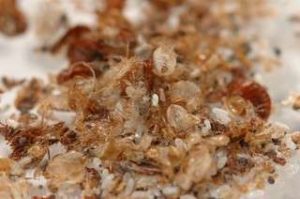
If you are moving into a dorm room, check for insect casings. Most insects molt and leave behind their dead casings. If you see these, you may be able to identify the pest type and level of concern you should have in your new home.
If you find cockroaches, or bed bugs, you will need to notify your resident assistant to have pest control come and treat. While bed bugs don’t carry diseases, they do feed off of a host, and cockroaches do carry diseases. So, it is important to get these pests treated right away.
Maybe you notice some mouse droppings or dried urine. Mice don’t have any bladder control, which means they release toxins and carry illness and disease causing pathogens everywhere they go.
Mice, like cockroaches and bed bugs, can travel from unit to unit, so it is even more important to have pest control in place.
2) Deficiencies in your unit.
When it comes to dorm pests that may travel from room to room, you may look for signs in your unit that prove pests can more easily travel from room to room.
Any gaps in the baseboards or near heating ducts or registers prove to be easy areas for mice to travel. Bed bugs also travel through the wall voids and come out from the baseboards in bedrooms, so check those baseboards. Finally, cockroaches can slip in and out of outlet coverings, so be on the lookout for any live or dead pests near or around the outlets.
3) Evidence of pest control.
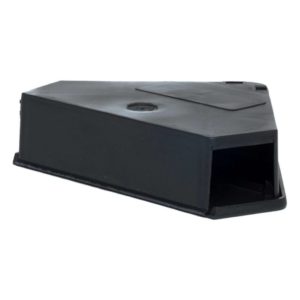 With multi-unit housing or dorm units, regular pest control is a must. Often there will be ant or cockroach bait stations in a corner of the floor or on the counter. Or you may find a mouse bait station or a mouse trap under the kitchen or bathroom sink. These are signs that there have been pest issues before and pest control has been performed here before.
With multi-unit housing or dorm units, regular pest control is a must. Often there will be ant or cockroach bait stations in a corner of the floor or on the counter. Or you may find a mouse bait station or a mouse trap under the kitchen or bathroom sink. These are signs that there have been pest issues before and pest control has been performed here before.
Just keep an eye on these traps and bait stations and notify your resident assistant if you notice any changes that will warrant a pest control visit.
Want immediate relief? Give us a call for a free quote and to talk with a professional today: 651-342-9489.
Tips for Moving into Multi-Family Housing/Apartments
 Multi-family housing complexes see a lot of regular turnover throughout the years. There are so many life-changes that bring reasons to move into an apartment. Maybe you’re moving out on your own for the first time; maybe you are moving in with your partner; maybe you just got out of a relationship; or maybe you’re downsizing.
Multi-family housing complexes see a lot of regular turnover throughout the years. There are so many life-changes that bring reasons to move into an apartment. Maybe you’re moving out on your own for the first time; maybe you are moving in with your partner; maybe you just got out of a relationship; or maybe you’re downsizing.
Whatever the reason, we want you to feel at home in your new space, and with that comes the peace of mind of not having pests. Pests disrupt our daily life and activities. We, at Done Right Pest Solutions, want to eliminate that disruption and get you back to living your best life.
So, whatever reason brings this new change of home, here are 3 more things to look for on move-in day as well as 2 things to watch for on a regular basis.
3 More Things to Look for on Move-in Day
Similarly to moving into a dorm room, we want you to keep an eye out for those 3 tips: signs of pest activity, deficiencies in your unit, and evidence of pest control.
But, we also have another list of 3 more things to look for on move-in day.
1) Look for second-hand furnishings.
If you are a DIY-er, when it comes to home furnishings, that is awesome. We love reducing, reusing, and recycling. But, it is very important to note that this is one of the ways that pests, like cockroaches and bed bugs, can spread. So be sure to inspect all of your second-hand items very well before purchasing. And keep that in mind if a neighbor ever asks you about their thrift store finds.
2) Use plastic storage containers.
It is OK to use cardboard boxes for moving, but we would recommend switching your storage items to a plastic storage container that you can store under your bed, in a closet, on a shelf, or in a storage unit.
Cardboard boxes are harborage areas for cockroaches. They love the material. Not to mention that cardboard boxes can get wet, which lessens the integrity of the boxes to store your items. Wet cardboard boxes are ideal conditions for cockroaches because they love dampness too! Just keep that in mind when you’re thinking of storing items.
3) Inspect the backs of your appliances.
Cockroaches love harboring in the backs of your kitchen appliances, likes ovens, refrigerators, and microwaves. They love the warmth the electricity brings and the dark and safe environments.
Inspecting these areas may spook any live bugs to where you can see them or you could find some egg casings or moltings.
While this may sound intimidating, it is best to know of what issues living in an apartment may bring prior to moving in, or at least on move-in day. You can have the property manager or owner schedule pest control right away, and knowing of the issues will help you manage your expectations of your living environment.
If you are a property manager, check out our study and guide: What to Pay for Pest Control.
2 Things to Watch for on a Regular Basis
Some multi-family housing complex owners or managers simply don’t have regular pest control. They may just hire out when absolutely needed, like with infestations. But some multi-family housing complex owners or managers do have regular pest control. It is important to inquire of this amenity prior to signing a lease if it’s important to you.
Done Right Pest Solutions offers a proactive approach when it comes to Multi-Family Housing Pest Control needs and budgets. At any rate, here are 2 things to watch for on a regular basis.
1) Exterior bait stations with a pest control company logo.
If your apartment has bait stations, that typically means that a current pest control team has been employed to keep the pests managed throughout the buildings. Knowing that your property manager uses pest control can put your mind at ease because you know that if an issue arises, you’ll be taken care of.
2) Keep an eye out for any pests in hallways and common areas.
If your property manager has pest control, it is important to keep them apprised of the pest issues going on. This can help lessen the length of time you and your neighbors will have to deal with the pests.
Likewise, if your property manager doesn’t have a current pest control company employed, you can notify them in instances where there are infestations and when pest control should be implemented.
Want immediate relief? Give us a call for a free quote and to talk with a professional today: 651-342-9489.
Tips for Moving into a House
 Town homes, single-family houses, and multi-family apartments all have their advantages and disadvantages when it comes to living and maintaining your home.
Town homes, single-family houses, and multi-family apartments all have their advantages and disadvantages when it comes to living and maintaining your home.
Townhomes often have a shared wall, which means that pests can travel between the units, but not as freely as apartments. Single-family homes are stand-alone buildings that still have maintaining to do to keep pests out.
You can read more of Residential Pest Control on our page. Otherwise, here you can read of 3 pest inspections to have prior to home sale as well as 3 pest inspections to have prior to mortgage approval.
3 Pest Inspections to have Prior to Home Sale
Most real estate agents require a rodent inspection prior to home sale, but not all do. Here is our recommendation of 3 pest inspections to have prior to home sale.
1) Mice.
Many real estate agents have requirements of having houses inspected for mice prior to home sale. Any mouse activity found by the pest control technician performing the inspection is usually listed in the purchase agreement(s).
This gives the future home owner more information on the pest activity, as well as a company to call if they need pest control in the future.
For tips on common seasonal pest control issues that plague residential homes, check out this category within our blog.
2) Cockroaches.
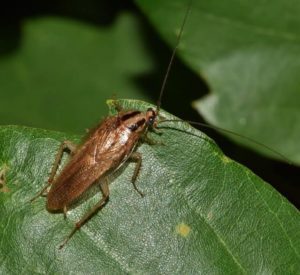 Because cockroaches can spread through tenants or homeowners moving in and out of homes, we would recommend a multi-pest inspection prior to home sale. Cockroaches can hide in wall voids during the day and can go relatively unnoticed throughout showings and the home sale.
Because cockroaches can spread through tenants or homeowners moving in and out of homes, we would recommend a multi-pest inspection prior to home sale. Cockroaches can hide in wall voids during the day and can go relatively unnoticed throughout showings and the home sale.
Done Right Pest Solutions is here if you need cockroach control in your new home, but would prefer for you to not have any pest surprises upon moving in.
3) Bed bugs.
Bed bugs can also hide in wall voids. These pests are nocturnal and typically awake and feed between the hours of 2 and 4 am, or when the host is at his or her deepest level of sleep. A multi-pest inspection should eliminate any surprise of bed bugs in your new home.
Want immediate relief? Give us a call for a free quote and to talk with a professional today: 651-342-9489.
3 Pest Inspections to have Prior to Mortgage Approval
Some mortgage approval requires a NPMA-33 form to be completed by a licensed pest control technician to ensure the home is structurally sound and secure from wood destroying insects like carpenter ants, wood boring beetles, and carpenter bees.
1) Carpenter ants.
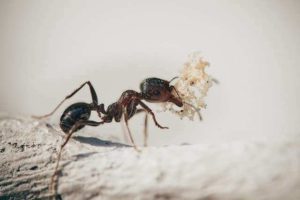
Minnesota typically doesn’t have any termite problems. Termites haven’t been known to withstand the harsh Minnesotan winters like carpenter ants can. And while carpenter ants don’t eat wood, they do build with it.
Carpenter ants can be destructive pests, and cost homeowners billions of dollars in damages throughout the country every year.
2) Wood boring beetles.
Carpenter ants aren’t the only pests that ruin structures. Wood boring beetles can bore into wood, creating holes and lessening the structural integrity of the wood in your home.
A good pest control technician should be able to spot the warning signs of these pests and include information in the inspection report.
3) Carpenter bees.
These pests don’t always pick homes to build into, but sometimes they do. (They don’t like any wood that has been treated.) These bees can find their way into homes under siding, in gaps in the foundation, under shutters, and around windows and door frames. Once inside these wall voids, these carpenter bees can build their nests into the wood.
You may notice these bee’s homes in your wood if you see a bunch of holes like you drilled into it, but it wasn’t you. This is what the openings may look like.
While Done Right Pest Solutions offers the wood destroying insect inspections, we also offer effective stinging insect treatment.
Tips to Keeping Your Space Pest Free
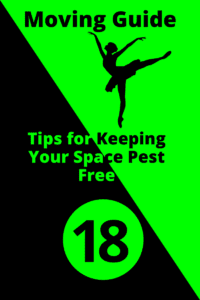 No matter what home type you live in, pests can come at any time. While some are seasonal and some are invasive, some are just dependent on environment.
No matter what home type you live in, pests can come at any time. While some are seasonal and some are invasive, some are just dependent on environment.
Here you can learn some tips to keeping your space pest free, including 18 seasonal pests to watch out for annually and the importance of preventative pest control.
18 Seasonal Pests to Watch Out for Annually
Throughout the year there are always pests to watch out for. Here are 18 seasonal pests to watch out for annually, broken up by seasons.
7 Summer Pests.
Some folks get fruit flies or flies in their home in the summer. Both can be eradicated once you eliminate the source. Keep your kitchen clean and use orange peels in your garbage disposal to keep fruit fly larvae from breeding in there.
Or maybe you get carpenter ants in your porch or kitchen. These pests can be so destructive to homes. Preventative pest control treatments can eliminate these pests from your home and yard.
Or maybe you get mosquitoes and ticks in your yard. Mosquitoes and ticks carry diseases so it is important to have preventative pest control in place for these pests. These are treated by a liquid spray that is applied to breeding and harborage areas in your hard.
Voles are exterior seasonal pests and are treated like mice with a secure exterior bait station. Moles, on the other hand, are burrowing pests. We treat these pests cautiously and humanely with a carbon dioxide gas machine.


In the photos above, you can view vole runs along the grass and mole hills.
4 Fall Pests.
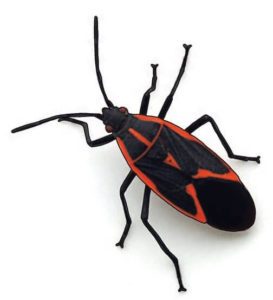
Boxelder bugs and Asian lady beetles are common fall pests that like to sun themselves on the side of your home. These bugs are not destructive, but they can be a nuisance when they crawl in the walls of your home to hibernate and then wake up in the late winter or early spring and invade your home. This happens all the time.
Ground hornets and aggressive wasps can pester many. Bald faced hornets are very aggressive too. Because these pests cause pain and many are allergic to them, it is important to have a preventative pest control plan in place to treat hornets and wasps.
Want immediate relief? Give us a call for a free quote and to talk with a professional today: 651-342-9489.
4 Winter Pests.
Mice are one of the most common pests in Minnesota in the winter. Mice strive to overwinter in homes and other structures, able to squeeze in any opening one-fourth of an inch or larger.
The change in weather can cause foundations to shift and settle, creating small cracks and gaps that they fit through. Mice are a seasonal pest, yet some can have them year-round. Because mice carry diseases, it is important to have them treated for routinely. Check out our Helpful Resources page for our infographic, if you’d like to perform your own mouse service.
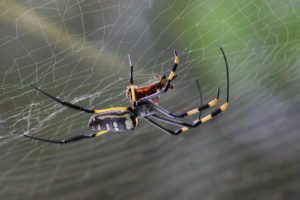
Spiders, centipedes, millipedes, and other creepy crawly pests lurk in basements year-round, but many notice them in the winter. While there aren’t many venomous spiders in Minnesota and Wisconsin, they aren’t a favorite among the majority of people.
One of my favorite bug jokes is, “I always name my spiders ‘Cotton-Eyed Joe’ because the 2 most important questions are: ‘where did you come from?’ and ‘where did you go?’” But joking aside, it is so unnerving to have pests running rampant in your home. It makes you uncomfortable.
Done Right Pest Solutions wants you to be able to feel comfortable in your own home.
3 Spring Pests.
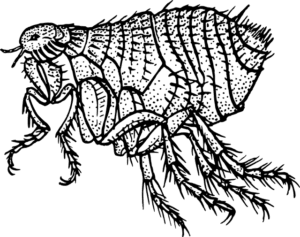
There are many pests that wake up from hibernation in the spring and cause alarm to home owners. Some of the common spring pests are paper wasps, springtails, and fleas. We treat preventatively for paper wasps and springtails in one visit. Fleas begin to re-inhabit tall grasses and travel from animal to animal that way again.
Fleas actually carry diseases, like the black plague that infested rats and transferred to humans in the 1300s. Thankfully they are easily treatable today.
Importance of Preventative Pest Control
With the many seasonal pests in Minnesota and Wisconsin trying to make their home in or around your home, that is reason enough to get pest control. But if you need another reason, or 5, check out our article Comparison: Proactive Pest Control Verses Reactive Pest Control & 5 Reasons to have a Proactive Pest Control Plan.
Done Right Pest Solutions offers year-round coverage with our Peak Seasons Plan, but more on that below.
Annual & Seasonal Pest Coverage through Done Right Pest Solutions
Done Right Pest Solutions offers residential, commercial, and multi-family housing pest control options.
Residential Pest Control.

Whether you live in a town home, single-family home, condo, or duplex, Done Right Pest Solutions offers the most affordable year-round pest control service in the form of our Peak Seasons Plan.
Check out our information on rental properties if you rent out your home.
This plan comes with seasonal treatments in the spring, summer, and fall. If anything comes up in between seasons or over the winter, all you have to do is call and there is no additional charge!
Our spring treatment is a full exterior power spray from the foundation to the soffit, fascia, and gutter area. This power spray is crucial to protecting your home from all of the spring invading insects (like paper wasps) and all those creepy crawlies waking up from hibernation.
Our summer treatment is a foundational spray that works wonders with carpenter ants and any hot weather pest. The product we use can even affect satellite colonies throughout your yard, getting rid of generations of carpenter ants.
Our fall treatment is a full exterior power spray from foundation to soffit, fascia, and gutter area again. This power spray is a protective layer against the box elder bugs, Asian lady beetles, hornets, and wasps that try to get under your siding to over-winter.
This plan is the most comprehensive plan we offer. The other pests you might possibly need coverage for are mosquitoes, ticks and moles, which we have one-time and seasonal services for.
Our Mosquito and Tick Plan eradicates up to 95% of mosquitoes and ticks in your yard, which is great news, since it greatly lessens your risk for contracting Lyme’s disease or one of the other 16 tick-borne diseases. Up to 75% of Lyme’s disease outbreaks are from backyards.
The Mosquito and Tick Plan covers you for monthly treatments during May through September. And if it rains frequently in a month and you’re getting bitten up, give us a call for an extra treatment, no charge.
Read more about our Residential Pest Control options on our page. Or, watch a video outlining how we perform our Peak Seasons Plan treatments on single-family homes!
Commercial Pest Control.

Done Right Pest Solutions also offers similar services to commercial clients, and while we offer mix-and-match services to match your needs and budget, most choose Monthly Service or Quarterly Service. For more information, check out our Commercial Pest Control page or our Multi-Family Housing Pest Control page.
You can also view our Commercial Flyer for some brief information. But for the most complete, comprehensive, thorough, quality service, we hope you’ll hire Done Right Pest Solutions for all of your commercial pest control needs.
Conclusion & Next Steps
You have learned an extensive amount about how to keep your space pest free while moving. From 3 things to look for on move-in day and other tips for moving back to college dorms; to 2 things to watch for on a regular basis and other tips for moving into multi-family housing/apartments; and you even learned tips for moving into a house, like 3 pest inspections to have prior to home purchase and 3 pest inspections to have prior to mortgage approval.
Finally, you learned of 18 seasonal pests to watch out for annually and the importance of preventative pest control. You also learned about the proactive and preventative pest control plan: the Peak Seasons Plan.
We offer the best pest control services for Residential Pest Control, Commercial Pest Control, and Multi-Family Housing Pest Control.
Give Done Right Pest Solutions a call for all of your pest control needs, including tips and tricks to keep your space pest free while moving.
We can’t wait to help.
Done Right Team
Was this guide helpful? Have you ever moved and gained pests in your space? How did you deal with them? We would love to hear of your experience below!
Want to learn more tips and tricks regarding pest control? We offer tailored content! Subscribe to our free email newsletter.

